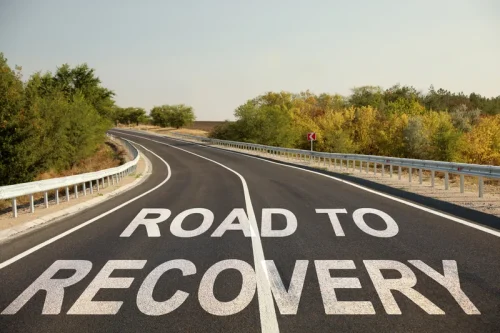views
Abstinence Violation Effect AVE What It Is & Relapse Prevention Strategies

At Bedrock, we use evidence-based approaches such as cognitive-behavioral therapy (CBT) to help our clients develop coping skills and enhance resilience in the face abstinence violation effect of setbacks. By implementing certain strategies, people can develop resilience, self-compassion, and adaptive coping skills to counteract the effects of the AVE and maintain lifelong sobriety. Additionally, individuals may engage in cognitive distortions or negative self-talk, such as believing that the relapse is evidence of personal weakness.

AVE in the Context of the Relapse Process
It doesn’t seem logical that we would still experience cravings when we were only just recently hurt by a relapse. We fail to realize that putting drugs and what is alcoholism alcohol back in our system was likely what reignited our cravings in the first place. Learning to recognize this will be one of our greatest tasks as we move forward.

How the Abstinence Violation Effect Affects Recovery

Note that these script ideas were pulled from a UN training on cognitive behavioral therapy that is available online. Twelve-step can certainly contribute to extreme and negative reactions to drug or alcohol use. This does not mean that 12-step is an ineffective or counterproductive source of recovery support, but that clinicians should be aware that 12-step participation may make a client’s AVE more pronounced. First characterized as an important ingredient in the relapse process in the mid-1980s, the AVE has profound relevance for addiction professionals today. In our era of heightened overdose risk, the AVE is more likely than ever to have tragic effects. Always seek the advice of a physician or other qualified health provider with any questions you may have regarding a medical condition.
Study setting and participants
In the second training session, the CBT intervention was focused on identifying high-risk situations through brainstorming about triggers, as well as methods of adapting to triggers. The results of this study showed that cognitive-behavioral intervention increased the mean score of high-risk relapse situations in the intervention group compared to the control group. Therefore, it can be concluded that it was effective in reducing high-risk situations. Accordingly, policymakers should pay attention to these situations in their programs. The study conducted by Alamdarloo et al. indicated that the depression, anxiety, and stress of Iranian males with addiction as an internal high-risk situation were reduced through cognitive-behavioral therapy 21.
AVE and the 12-Step Approach
- Additionally, the support of a solid social network and professional help can play a pivotal role.
- The Abstinence Violation Effect can have both positive and negative effects on behavior change.
- She is a Certified Recovery Residence Administrator with The Florida Certification Board and licensed Notary Public in the state of Florida.
- AVE also involves cognitive dissonance, a distressing experience people go through when their internal thoughts, beliefs, actions, or identities are put in conflict with one another.
It is estimated that there are 1.3 billion people worldwide who use tobacco products, and most of them are from low- and middle-income countries 2. Smoking harms nearly every organ in the body, causing numerous diseases and affecting the health of smokers in general 3. Tobacco use results in the deaths of more than 8 million people every year 4. Still, despite preventive programs in Iran, the smoking trend in adults has not declined in the last two decades 5.
- We want to give recovering addicts the tools to return to the outside world completely substance-free and successful.
- We feel an urge or encounter a trigger, and suddenly we decide that our attempts at recovery have failed.
- He calls this “urge surfing.” Instead of denying our addictive nature or hating ourselves for it, we learn to keep living in spite of it.
- John understands first hand the struggles of addiction and strives to provide a safe environment for clients.
Addressing the AVE in the context of addiction treatment involves helping people develop healthier coping strategies and challenging negative beliefs that contribute to addiction. As a result, it’s important that those in recovery internalize this difference and establish the proper mental and behavioral framework to avoid relapse and continue moving forward even if lapses occur. You may also have a similar thought to the reward thought after a period of sobriety. After a period of success in your recovery, you may think you can control your drug or alcohol use again. Even though you may think this time is different, if your drinking and drug use has gotten out of hand in the past, it is unlikely to be different now.
- After a period of success in your recovery, you may think you can control your drug or alcohol use again.
- Each session included a variety of activities, such as group discussion, lecture, Q&A, individual counseling, and role play to encourage participants to engage more in discussion and participation.
- You are not unique in having suffered a relapse and it’s not the end of the world.
- In a review of controlled clinical trials, Carroll found the strongest support for Marlatt-based relapse prevention when it was applied to smoking cessation 18.
- You might imagine a relapse as a single event that occurs during a moment of weakness.
- First, during the three stages of follow-up, an increase was observed in terms of lapse and relapse in the intervention group, which highlights the need to consider reminder and booster programs over time in the intervention.
Hopefully, one does not lose all the knowledge and experience gained along the journey. The Abstinence Violation Effect (AVE – think the abbreviation for avenue to help you remember it) is what happens when an individual deviates from his/her plan – and then continues to remain off that path due to frustration, shame, guilt, etc. When that person takes even one drink (”violating” their abstinence), the tendency is to think, “I really blew it…I’m a failure…might as well keep on drinking now! ” I refer to this as a case of the “screw-it’s” (although harsher language is not uncommon!); a sense of giving up.
The control group received routine smoking cessation treatment in 7 one-hour sessions. These sessions were held weekly and provided by counseling experts in smoking cessation clinics. Follow-ups were done immediately, one week and three months after the intervention. The Chi-square test was used for the comparison of demographic variables between the intervention and control groups.
The AVE was introduced into the substance abuse literature within the context of the “relapse process” (Marlatt & Gordon, 1985, p. 37). Relapse has been variously defined, depending on theoretical orientation, treatment goals, cultural context, and target substance (Miller, 1996; White, 2007). It is, however, most commonly used to refer to a resumption of substance-use behavior after a period of abstinence from substances (Miller, 1996).